The Ultimate Guide to Cycle Denmark
Your ultimate guide to cycling Denmark – make every mile count with safe paths, long summer days, and a cycling culture like no other.
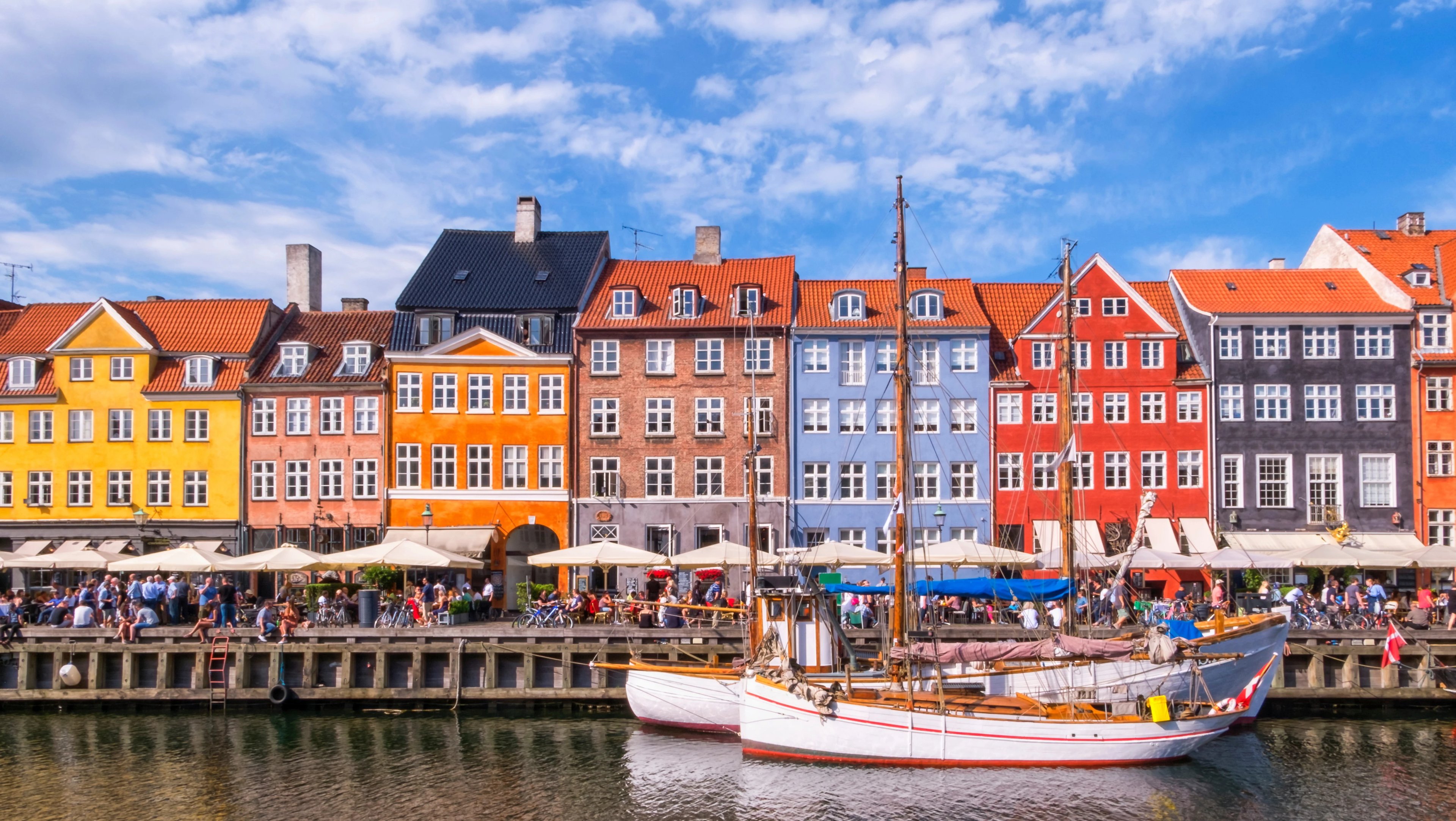
Quick links
Did you know Denmark has over 12,000 kilometers of marked cycle routes, some of the safest bike paths in the world, UNESCO castles and cathedrals within easy reach, and summers with 18 hours of daylight?
It’s no surprise Denmark is ranked among the world’s top cycling nations and is one of the easiest places in Europe to explore on two wheels!
This guide covers everything you need to know before your cycling holiday, including:
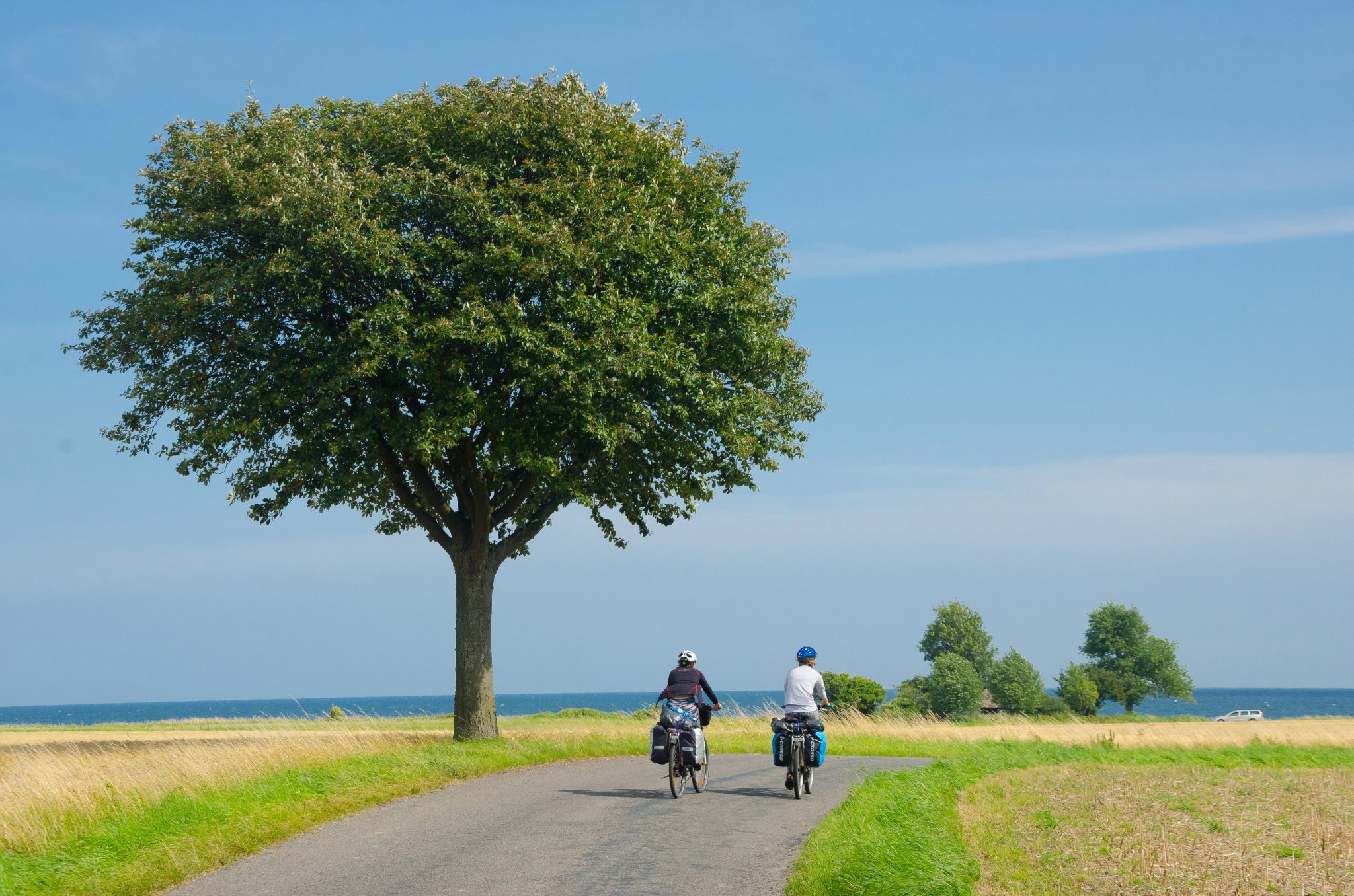
Why Cycle Denmark?
Denmark is one of the world’s most bike-friendly destinations — safe, scenic, and designed for riders of every level.
From world-class infrastructure to scenic routes and accessible terrain, here are the key reasons why cycling in Denmark stands out.
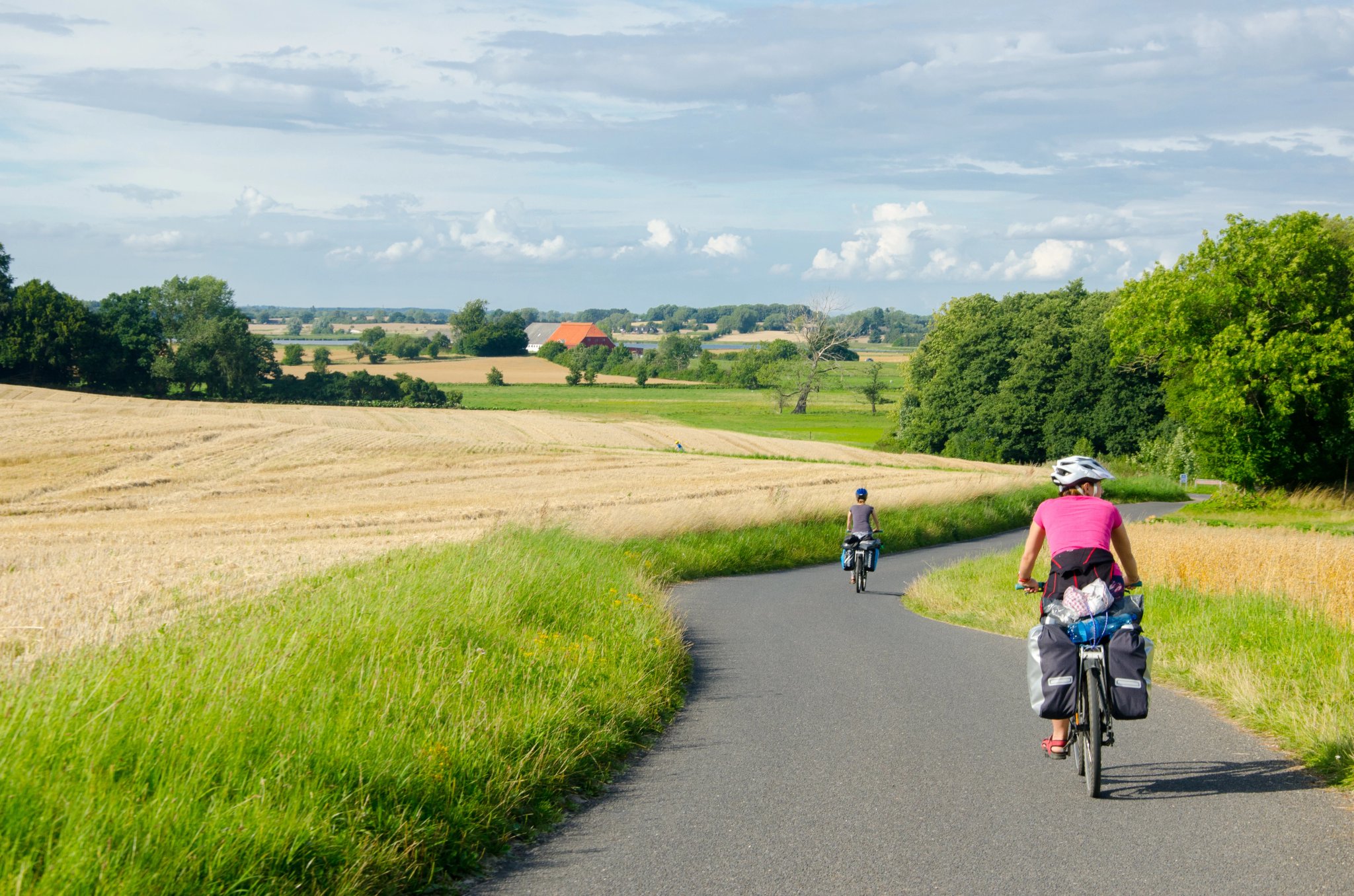
11,000+ kilometers of cycle routes – Including 11 national long-distance trails ranging from 170 kilometers to 820 kilometers.
Flat and accessible terrain – Denmark’s highest point is only 170 m above sea level, making it easy for families, casual riders, and multi-day touring.
Cycling culture everywhere – Around 90% of Danes own a bike, and in Copenhagen, 62% commute daily by bike.
Safety first – Denmark consistently ranks in the top 10 on the Global Peace Index, offering some of Europe’s safest cycling conditions.
Mild summers & long days – Average highs of 20–22°C and up to 18 hours of daylight in June — perfect for long rides and sightseeing.
UNESCO & cultural sites – Cycle directly to Kronborg Castle, Roskilde Cathedral, and Stevns Klint, all UNESCO World Heritage Sites.
Compact distances – Towns, coasts, and landmarks are often just 20–40 kilometers apart, ideal for both short stages and longer tours.

When to Go?
Denmark is best enjoyed on two wheels between April and October, but knowing the seasons can help you pick the perfect time for your ride.
Here’s a quick breakdown:
Spring (April–June) – Fresh air, blooming countryside, and longer days. Temperatures range from 10–20°C, and May and June are especially good with mild weather and fewer crowds.
Summer (July–August) – Peak season with average highs of 20–22°C and up to 18 hours of daylight. Unlike southern Europe, summers here are pleasantly mild, making July and August perfect for long rides.
Autumn (September–October) – Cooler but still pleasant, with daytime temperatures around 10–15°C. Colorful landscapes and quieter routes make September a sweet spot, while October brings more rain and shorter days.
Winter (November–March) – Short days, wind, and cold (average highs 2–6°C) make cycling less enjoyable. Locals still ride for commuting, but it’s not the season for touring.

Not sure when to go? Our month-by-month guide breaks it all down — from daylight hours and climate tips to which regions shine each season, so you’ll know exactly when and where to tour Denmark by bike.
Denmark’s Favorite Cycling Regions
What kind of rider are you? Castle-hopper, island-hopper, or someone who just wants wide coastlines and open skies? In Denmark, you don’t have to choose — the country offers it all.
Every bike holiday in Denmark is packed with variety. In just one trip, you can ride past UNESCO-listed cathedrals, cycle along North Sea dunes, or ferry between islands with ease.
Here are the top 5 regions for cycling Denmark:
North Zealand (Royal Castles & Coast)
Funen & the South Funen Archipelago
West Jutland & the North Sea Coast
Bornholm (The Baltic Island)
South Zealand & Møn

1. North Zealand (Royal Castles & Coast)
This region north of Copenhagen is a mix of sandy beaches, fishing villages, and Denmark’s most famous royal castles.
You’ll find scenic rides along the Oresund coast, plus cultural landmarks like Kronborg Castle and Frederiksborg Castle. Short distances between towns make it ideal for leisurely touring.
Experience the best of North Zealand:
2. Funen & the South Funen Archipelago
Known as the “Garden of Denmark,” Funen is all rolling countryside, orchards, and quaint half-timbered villages. The South Funen Archipelago is a dream for island-hopping cyclists, with ferries linking picturesque islands like Ærø (Ero) and Langeland.
It’s perfect for those who want a mix of coast, countryside, and cultural charm.

Explore Funen and its archipelago:
3. West Jutland & the North Sea Coast
Wild, windswept, and unforgettable — West Jutland is Denmark’s raw side.

The North Sea Cycle Route takes you past dunes, wide beaches, and the UNESCO-listed Wadden Sea National Park. This region is a paradise for long-distance riders who enjoy open landscapes and big horizons.
Discover the western coast:
4. Bornholm (The Baltic Island)
Called “the pearl of the Baltic,” Bornholm is Denmark’s cycling island.
It offers dramatic cliffs, round churches, sandy beaches, and artisan towns like Svaneke and Gudhjem. The island’s 105–kilometer coastal loop is perfect for anyone who wants a self-contained cycling adventure with a mix of culture and nature.
Ride the best of Bornholm:
5. South Zealand & Møn
South Zealand combines tranquil countryside with Denmark’s most dramatic natural wonder, Mons Klint, the 120 m chalk cliffs above the Baltic.
The area is full of medieval towns, coastal villages, and quiet backroads that make for relaxed cycling. Perfect for riders looking for a mix of history and natural spectacle.
Cycle the southern coast:
Best Places to See in Denmark
Denmark may be small, but it’s full of world-class highlights — 11 UNESCO World Heritage Sites, over 7,000 kilometers of coastline, and historic towns where Viking stories and royal history come alive.
Naturally, our bike holidays in Denmark include some of the country’s most iconic places.
Here are our absolute favourite must-see stops to include on your ride:
Copenhagen
Denmark’s capital is one of the most bike-friendly cities in the world, where more bikes than cars fill the streets. You can ride to highlights like Nyhavn waterfront district, the Little Mermaid statue, or cross the city on its famous bike highways and bike bridges such as the Cykelslangen (Cycle Snake). Copenhagen combines history, design, and modern Nordic lifestyle in one vibrant package.

Roskilde
Just west of Copenhagen, Roskilde Cathedral is a UNESCO World Heritage Site and the burial church of Danish kings and queens. Nearby, the Viking Ship Museum displays five original ships recovered from the fjord, giving you an up-close look at Denmark’s seafaring past. Together, they make Roskilde one of the most historically rich stops on any cycling route.
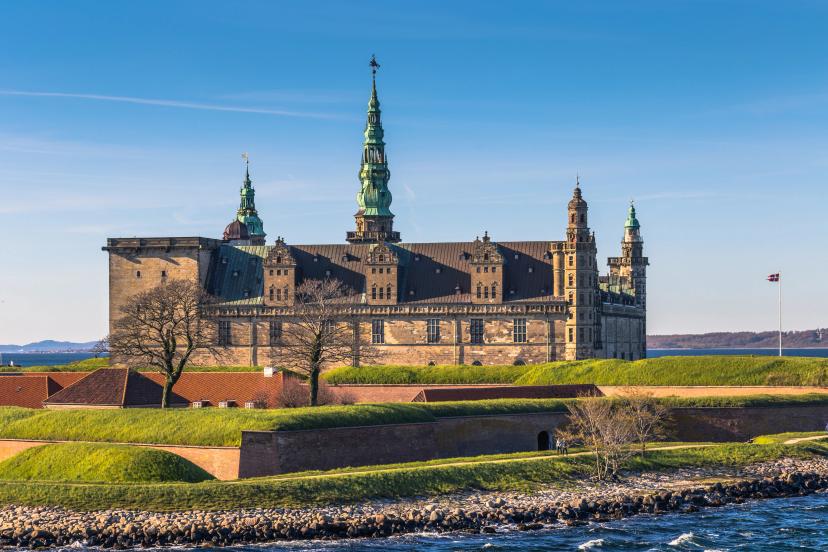
Kronborg Castle
This Renaissance castle on the coast is world-famous as the setting of Shakespeare’s Hamlet. Listed as a UNESCO World Heritage Site, Kronborg Castle is a highlight of North Zealand and can be reached by a scenic coastal ride from Copenhagen. Its dramatic location at the entrance of the Oresund makes it one of Denmark’s most iconic landmarks.
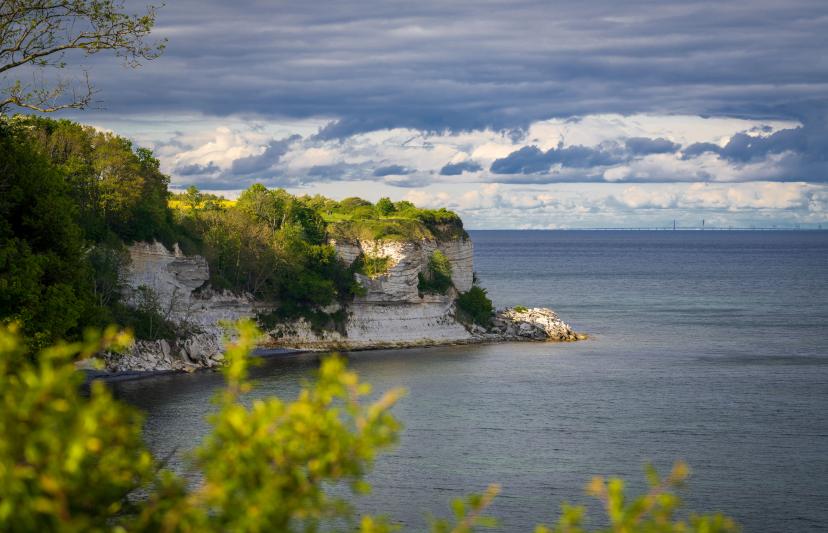
Stevns Klint
South of Copenhagen lies Stevns Klint, a 15 kilometers-long chalk cliff and UNESCO World Heritage Site. It preserves the geological layer that marks the asteroid impact, which wiped out the dinosaurs 66 million years ago. Cycling along its edge gives you panoramic sea views and a direct link to Earth’s history.

Odense (Hans Christian Andersen’s hometown)
Located on the island of Funen, Odense is the birthplace of fairy-tale writer Hans Christian Andersen. The city celebrates his legacy with museums and charming old streets that inspired his stories. Odense also blends culture with cycling, offering plenty of bike paths through parks, along rivers, and into its historic core.

Ribe (Denmark’s oldest town)
Founded in the 8th century, Ribe is Denmark’s oldest town and one of the best preserved. Its cobbled streets, half-timbered houses, and Viking history make it feel like a living museum. Cycling into Ribe is like stepping back in time, with the town’s cathedral and old harbor at its heart.

Dueodde Beach
On Bornholm, Dueodde Beach stretches out with white sand so fine it was once used in hourglasses. The beach is backed by dunes and pine forests, with a lighthouse offering panoramic views over the Baltic Sea. It’s one of the most spectacular natural stops on a Denmark bike adventure and a must-see on the island’s coastal cycling loop.
How Many Days for a Cycling Trip?
To strike the perfect balance between seeing as much as possible and not go overboard with active days on a bike, a period of around a week usually hits the sweet spot.

Plan for 7–8 Days… Then Add More
This time frame gives you enough days to ride Denmark’s best cycling routes, see all cultural sights and soak in the landscapes without feeling rushed.
But if your schedule allows, extending your stay before, after, or even during the tour is a fantastic way to deepen the experience.
Take our Royal Zealand Bike Tour, for example:
We often suggest spending extra nights in Copenhagen before the tour begins. The Danish capital is one of the most bike-friendly cities in the world and offers highlights like Nyhavn, the Royal Palaces, and the alternative vibe of Freetown Christiania.
Starting your cycling holiday here gives you a taste of Denmark’s culture before you head into the countryside.
Or consider the Ultimate Bornholm Bike Tour:
Many riders add a rest day at the end of the loop to enjoy Dueodde Beach or explore more of the island’s artisan towns. It’s an easy way to turn your trip into a full Denmark bike adventure.
Your Cycling Tour is Just the Start
But regardless of which bike holiday in Denmark you are leaning towards, there’s always more to see and do. The country is filled with charming towns, dramatic coastlines, and cultural gems that reward a slower pace. In case you're still lost in your research, we're here to help and advise you!

So if you’ve got the time, we encourage you to explore beyond your saddle. Our travel team knows Denmark like the back of their hand and can help you:
Add pre-tour cultural stops in Copenhagen or Odense
Plan post-tour rest days on islands like Bornholm or Funen
Choose active add-ons such as kayaking, hiking, or island-hopping
We’re here to chat and happy to help you craft the perfect extended cycling experience in Denmark.
What to Pack?
Getting ready for a cycling holiday in Denmark is easier than it sounds.
Essentials to Bring Along
Passport – should be valid for at least 3 months beyond your trip
Cycling kit – padded shorts, jerseys, gloves, and a light jacket; add layers, as Denmark’s weather can shift quickly
Comfortable casual wear – for evenings out or exploring towns off the bike
Swimwear – handy for hotel pools, spas, or even a refreshing dip at Denmark’s beaches and lakes
Light shoes or sandals – perfect for walking around after a day’s ride
Helmet – provided with our rental bikes, though many prefer to bring their own
Phone & charger plus a European plug adapter (Type C or F)
Portable power bank – to keep GPS or phone powered up during full-day rides
Sunglasses and sunscreen – long summer days mean hours of bright light
Reusable water bottle – hydration is key on every ride
Bank cards and a small amount of Danish kroner (DKK) – though Denmark is highly cashless, it’s good to have some coins/notes
Local SIM card or eSIM – easy to arrange on arrival, with strong nationwide coverage
Good-to-Have Extras
Rain jacket & waterproof gear – spring and autumn rides often come with passing showers (see more about Danish weather in our article here)
Shoe covers & warmer gloves – handy if you’re riding in cooler months like April or October
Arm/leg warmers – easy to pack and perfect for chilly mornings that warm up later
High-visibility vest or bands – useful for riding in low-light conditions, especially outside summer
Small first aid kit – plasters, painkillers, and electrolyte tablets for extra comfort on longer days

Cycling Rules & Road Etiquette in Denmark
Understanding the rules of the road is key to a safe and enjoyable bike tour in Denmark. The country is one of the most cycling-friendly in the world, but it’s important to know the basics before you ride.
Here’s what every rider on a cycling holiday in Denmark should keep in mind:
General Cycling Rules
You’re allowed to ride on public roads, cycle paths, and shared-use lanes. When riding on public roads—always stay on the right.
Cycling on motorways is strictly prohibited.
Bicycles are legally considered “vehicles,” so you must follow the same traffic laws as cars: stop at red lights and signs, and yield to pedestrians at crossings.
Always stay in the cycle lane when one is provided—Denmark’s infrastructure is extensive, especially in and around cities.
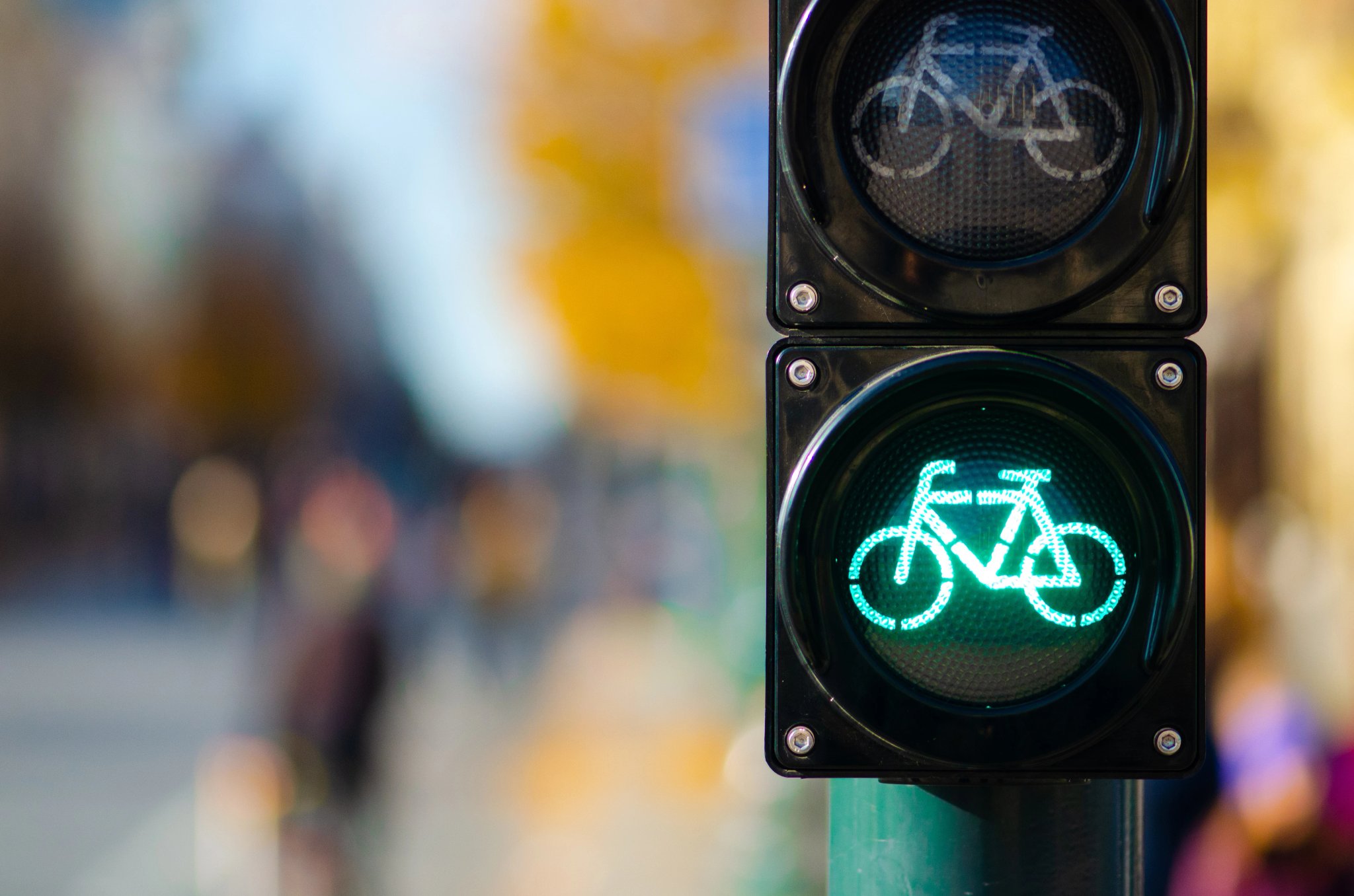
Riding Formation & Signals
Riding parallel to one another is permitted on most roads, provided you don’t obstruct traffic.
Use clear hand signals when turning or changing lanes — it’s expected, not optional.
In towns, always yield to buses pulling away from stops and give priority to pedestrians at zebra crossings.
Sidewalk Cycling & Vulnerable Areas
Cycling on sidewalks is not allowed, except for young children under 6.
In shared zones (pedestrian + bicycle), pedestrians always have priority. Ride slowly and give audible signals (a bell or a polite “tak!”) when passing.
In historic town centers with cobblestones and narrow streets, ride carefully and be prepared to walk your bike.

Helmet & Visibility Rules
Helmets are not mandatory for adults in Denmark, but strongly recommended, especially outside city areas.
Children under 15 must wear helmets by law.
At night or in poor visibility, turn on your white front light and a red rear light on your bike. Many Danes also wear reflective vests or ankle bands in winter.
Phone & Audio Use
Using a mobile phone while cycling is illegal unless it’s mounted and hands-free.
Wearing headphones while riding is not advised and can result in a fine if judged unsafe.
Alcohol & General Safety
Denmark does not have a set alcohol limit when it comes to cycling. However, we strongly advise against it and recommend being cautious when tasting local beer.
Police checks for cyclists are not uncommon in larger cities.
Drivers in Denmark are generally respectful of cyclists, but remember to keep right and stay visible, especially on rural roads where cars travel faster.
Courtesy & Etiquette
A small wave or nod of thanks is appreciated when drivers give you space.
On narrow roads or paths, ride single-file; on wider roads, two abreast is fine if it’s safe.
Use your bell when overtaking another cyclist — it’s standard practice and considered polite.
At traffic lights in Copenhagen and other big cities, expect “bike boxes” (waiting areas for cyclists in front of cars). Move into these zones when stopped at lights.
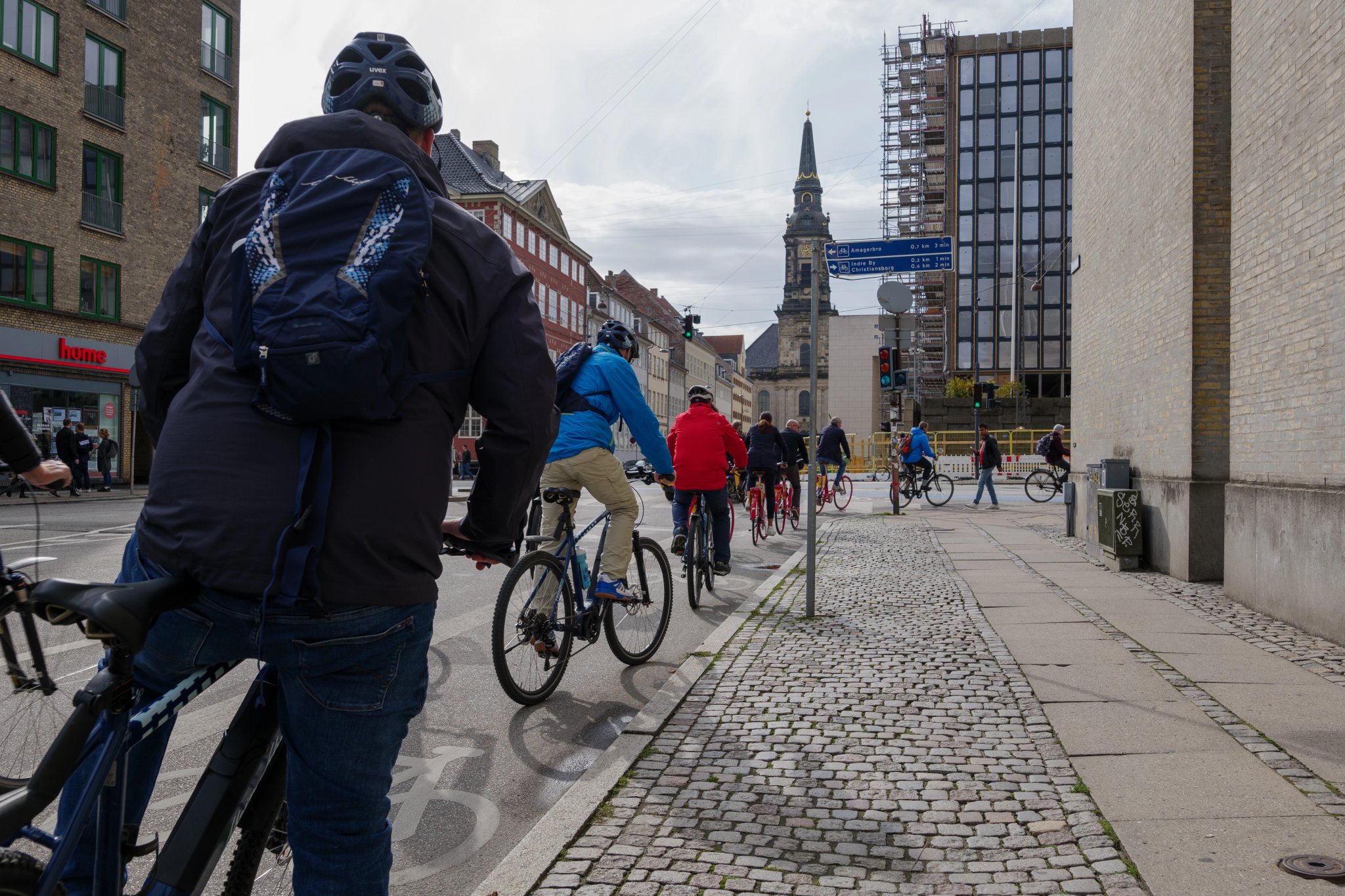
Navigating Danish Culture for Cyclists
Being on a bike tour in Denmark is more than just pedaling through safe roads and scenic landscapes — it’s also a chance to connect with the people, traditions, and everyday rhythm of Danish life.
Here are a few things to know about customs, habits, and attitudes that will help you feel at home during your Denmark bike adventures.
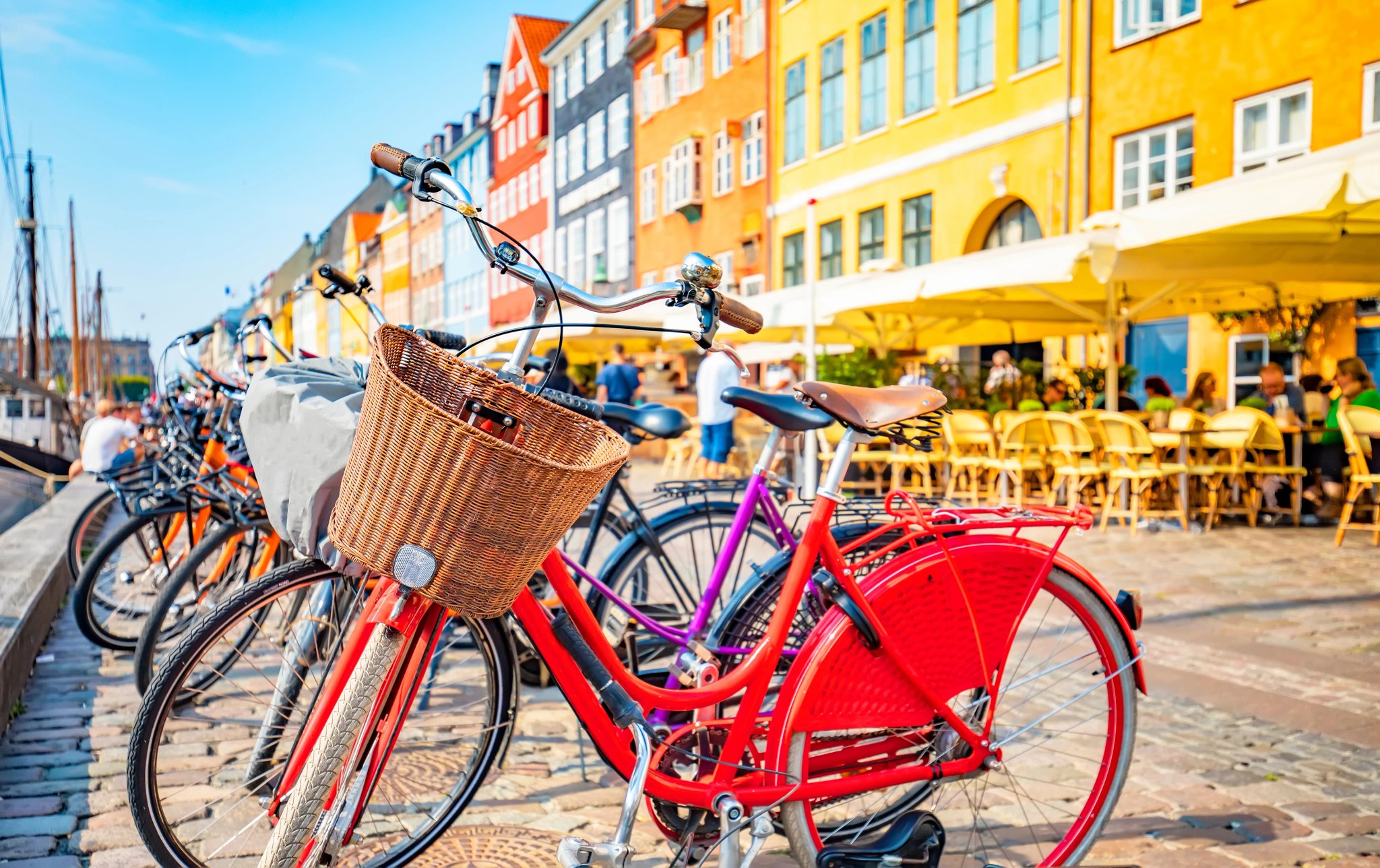
Embrace the Danish Pace – Efficient & Punctual
Denmark runs on efficiency and punctuality. Trains and ferries are on time, meals follow a set rhythm, and many shops close early outside cities. For cyclists, this makes planning easier and ensures a smooth, stress-free trip.
Café & Hygge Culture
Cafés are central to Danish life and embody the idea of hygge — coziness and comfort. Expect small, strong coffee, a pastry, and a relaxed atmosphere where cyclists and locals often mix at the same table.

Cuisine Worth Riding For
Food is a big part of any cycling holiday in Denmark, and local dishes are hearty, fresh, and worth seeking out on your rides.
Smørrebrød – Denmark’s iconic open-faced rye bread sandwiches, topped with herring, roast beef, or seasonal vegetables. They’re filling, tasty, and perfect as a cycling lunch.
Frikadeller – Traditional Danish meatballs, often served with potatoes and gravy. A protein-rich comfort food that rewards a long day in the saddle.
Wienerbrod (Danish pastry) – Flaky, buttery, and filled with custard, marzipan, or jam. Ideal for a mid-morning coffee stop on your route.
Sol over Gudhjem – A Bornholm specialty of smoked herring on rye bread with onion, radish, and raw egg yolk — a must-try if your bike Denmark trip takes you to the Baltic island.
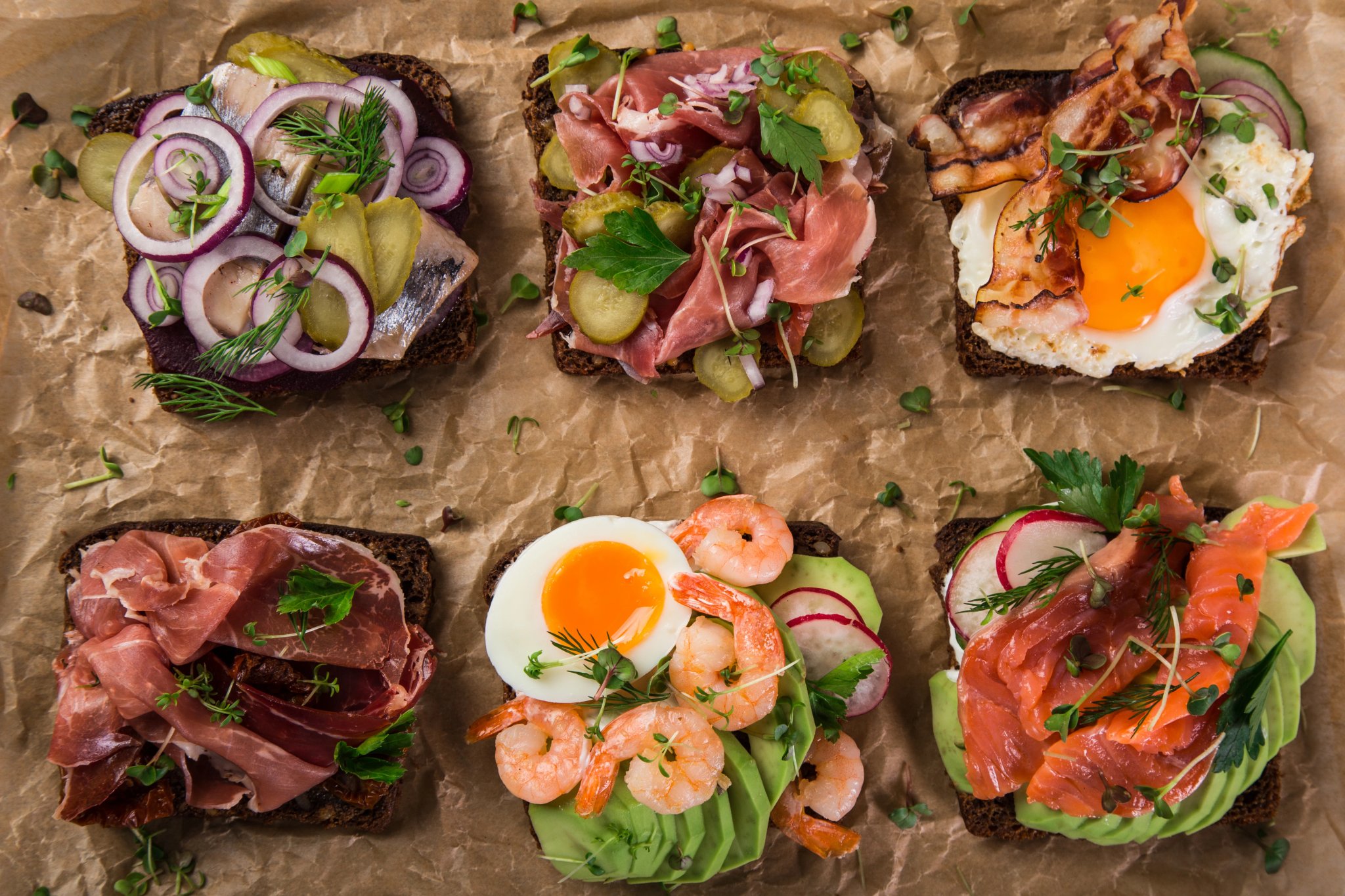
Culture on the Road: Expect the Unexpected
Even in the organized Denmark, surprises happen. Wind can change your pace, showers pass quickly, and rural rides may include tractors, horses, or schoolkids on bikes. These small interruptions are part of the charm when cycling Denmark.

Language Tips: Danish Basics
Almost 87% of Danes speak English, so communication is rarely a problem on bike holidays in Denmark. Still, locals appreciate it when you try a few simple words:
Hej (hi/hello)
Tak (thank you)
Godmorgen (good morning)
Farvel (goodbye)
En kaffe, tak (a coffee, please)
Danish pronunciation can be tricky, but even a small effort goes a long way. You’ll usually be met with a smile — and often, a flawless English reply.
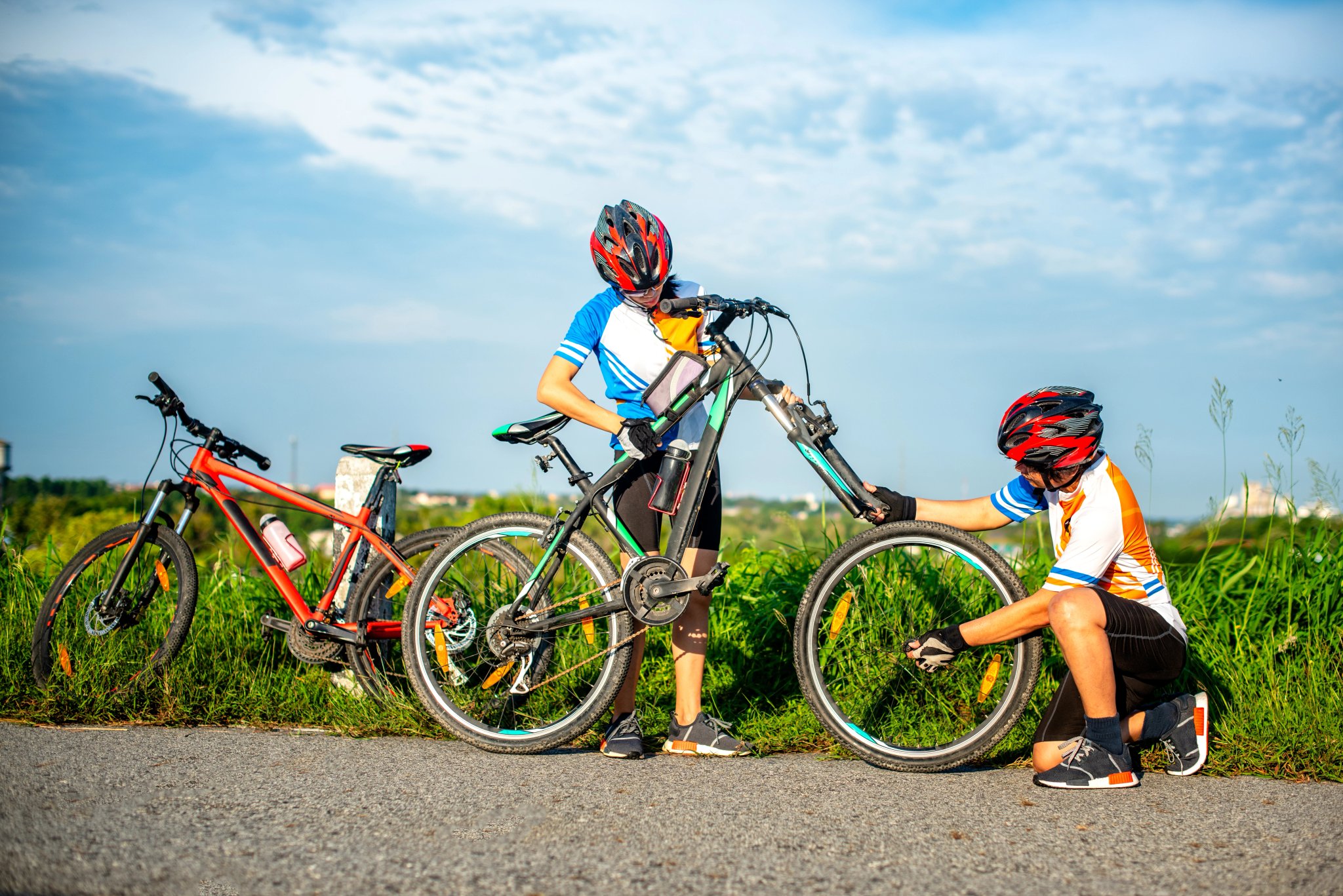
Travel Documents and Logistics
Before setting off on your bike holiday in Denmark, it’s worth knowing a few basics about entry requirements, airports, transport, money, and safety. Denmark is well-connected and easy to navigate, which makes travel smooth and stress-free.
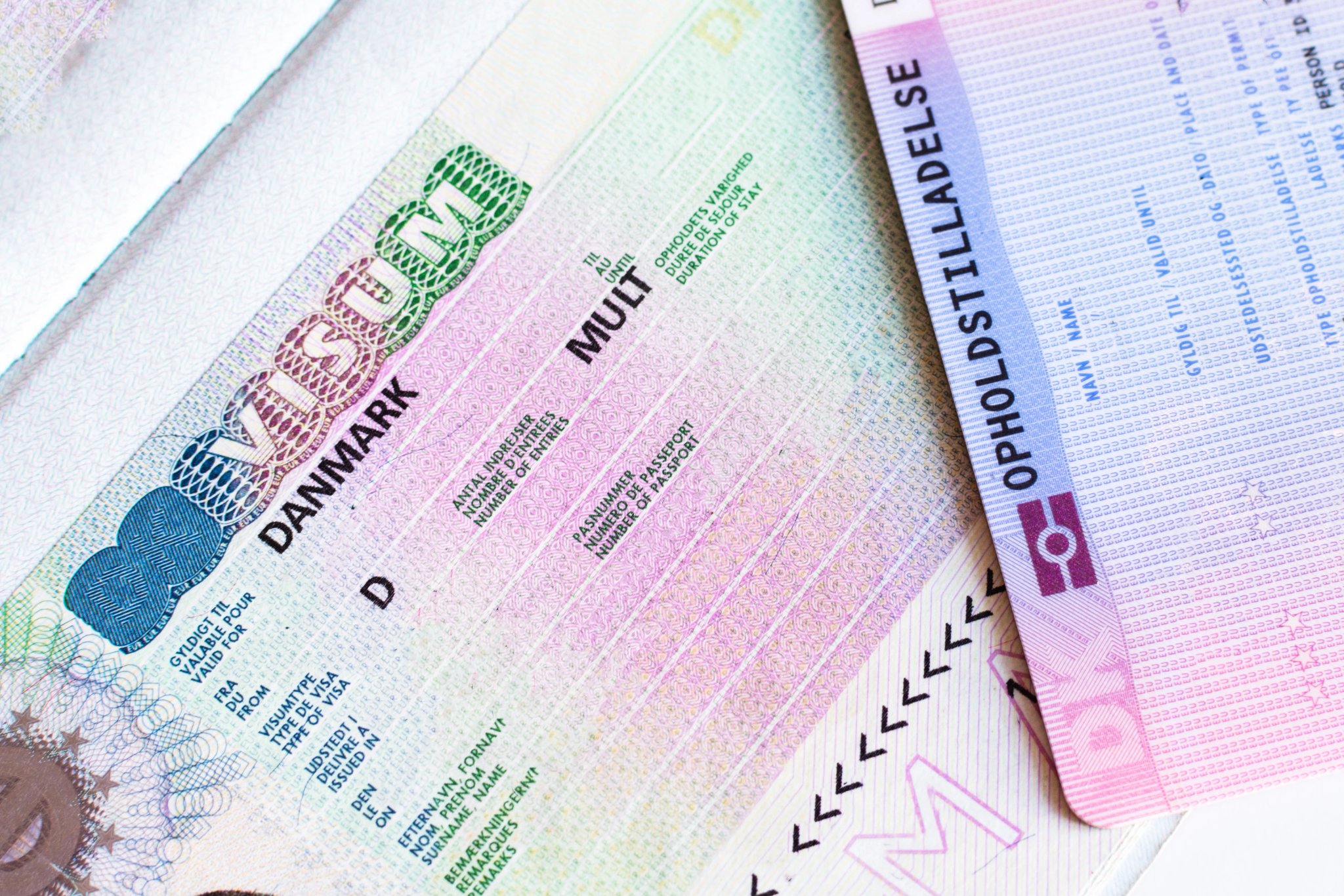
Visa and Entry Requirements
Denmark is part of the Schengen Area, so most travelers from Europe, the UK, the USA, Canada, Australia, and many other countries can enter visa-free for up to 90 days.
Your passport should be valid for at least three months beyond your planned departure. For longer stays, a Schengen visa is required.

Major International Airports
Copenhagen Airport (CPH) – Denmark’s largest and busiest airport, located just 15 minutes from the city center by metro. Perfect for starting the Royal Zealand tour.
Billund Airport (BLL) – Located in Jutland, ideal if you’re heading towards western Denmark or starting a Baltic Little Belt Bike Tour.
Aalborg Airport (AAL) – Serves northern Jutland, with connections across Europe. Handy for exploring Denmark beyond Copenhagen.
Travelling Via Public Transportation
Denmark’s transport system is bike-friendly, making it easy to combine trains, ferries, and even the metro with your ride. Here’s what to expect:
Regional & Intercity Trains – Bicycles are welcome on most trains across Denmark. You’ll need a bike ticket, but space is generally good, and stations are equipped with elevators or ramps; perfect for connecting longer distances quickly.
S-trains (Copenhagen) – Bikes travel free on all S-trains in the Copenhagen area, making it simple to reach suburban starting points. During rush hour, carriages can be busy, but dedicated bike spaces are clearly marked.
Copenhagen Metro – Bikes are allowed outside peak commuter times with a separate bike ticket. The metro is especially useful for arriving or departing via Copenhagen Airport, since the ride into the city takes just 15 minutes.
Buses – On most long-distance buses, bikes can be carried if there’s space in the luggage hold, but it’s best to reserve in advance. City buses in Copenhagen don’t carry bikes, so trains and metro are the go-to options.
Ferries – With over 400 islands, Denmark relies on ferries. Almost all accept bikes, often at no extra cost. They connect Zealand, Funen, and Jutland, as well as smaller islands like Ærø (Ero), making island-hopping a highlight of many bike tours in Denmark.

Currency and Payments
The currency is the Danish krone (DKK). Denmark is one of the most cashless societies in Europe — credit and debit cards are accepted almost everywhere, even in small cafés. ATMs are widely available in cities and larger towns, though less frequently in rural areas. It’s still useful to carry a little cash for village shops, local markets, or public toilets.

Emergency Numbers and Safety
Denmark is one of the safest countries in the world, consistently ranked in the global top 10.
The all-in-one emergency number is 112, connecting you to police, ambulance, and fire services.
Here’s what to say if you need to call:
State the emergency (e.g., accident, injury, fire)
Give your location (road name, town, GPS if possible)
Describe what happened briefly
Say how many people are involved
Mention any dangers (traffic, fire, etc.)
Give your phone number and stay on the line
You can call 112 from any phone, even without a local SIM.

Mobile Reception & Connectivity in Denmark
Denmark has excellent mobile coverage, with 4G nationwide and 5G in larger cities. Even rural cycling routes usually have a strong reception. Free Wi-Fi is common in hotels, cafés, and many public spaces.
Main providers: Denmark’s main mobile networks are TDC, 3 (Hi3G), and Telia/Telenor. All offer strong nationwide 4G coverage, with TDC often ranked as the most reliable in rural and coastal regions.
Prepaid SIM cards and eSIMs are easy to buy at airports or convenience stores if you want extra data during your Denmark bike adventures.
If you’re cycling in remote coastal or rural areas—such as stretches of West Jutland, the islands of Bornholm or Langeland, or forested parts of Funen—be prepared for occasional weak signal coverage.
Dead zones are rare, but downloading offline maps before your ride is always a smart precaution.
What to Expect on a Self-Guided Cycling Holiday
What Is a Self-guided Tour?
A self-guided Denmark bike tour means you enjoy the independence of traveling at your own pace while we take care of all the details. We arrange your accommodations, luggage transfers, routes, and even any special requests. All you have to do is sit back on the saddle and enjoy the ride!
There’s no fixed schedule or group to follow — just the freedom to enjoy your Denmark bike adventure with full support in the background.

Morning: Get Set for the Ride
On your first cycling day, your bike will be delivered to your hotel, fully set up and adjusted for you. We include everything you need to start comfortably:
Bike (hybrid, gravel, road, or e-bike, depending on your booking)
Helmet
Simple repair kit
Bottle holder
Special pedals on request
Each morning, breakfast is included at your hotel, typically served between 7:00–10:00 AM. We suggest starting earlier in summer to enjoy the cooler hours and make the most of the long daylight. Once you’re ready, simply set off with your GPX maps and digital guidebook guiding the way.
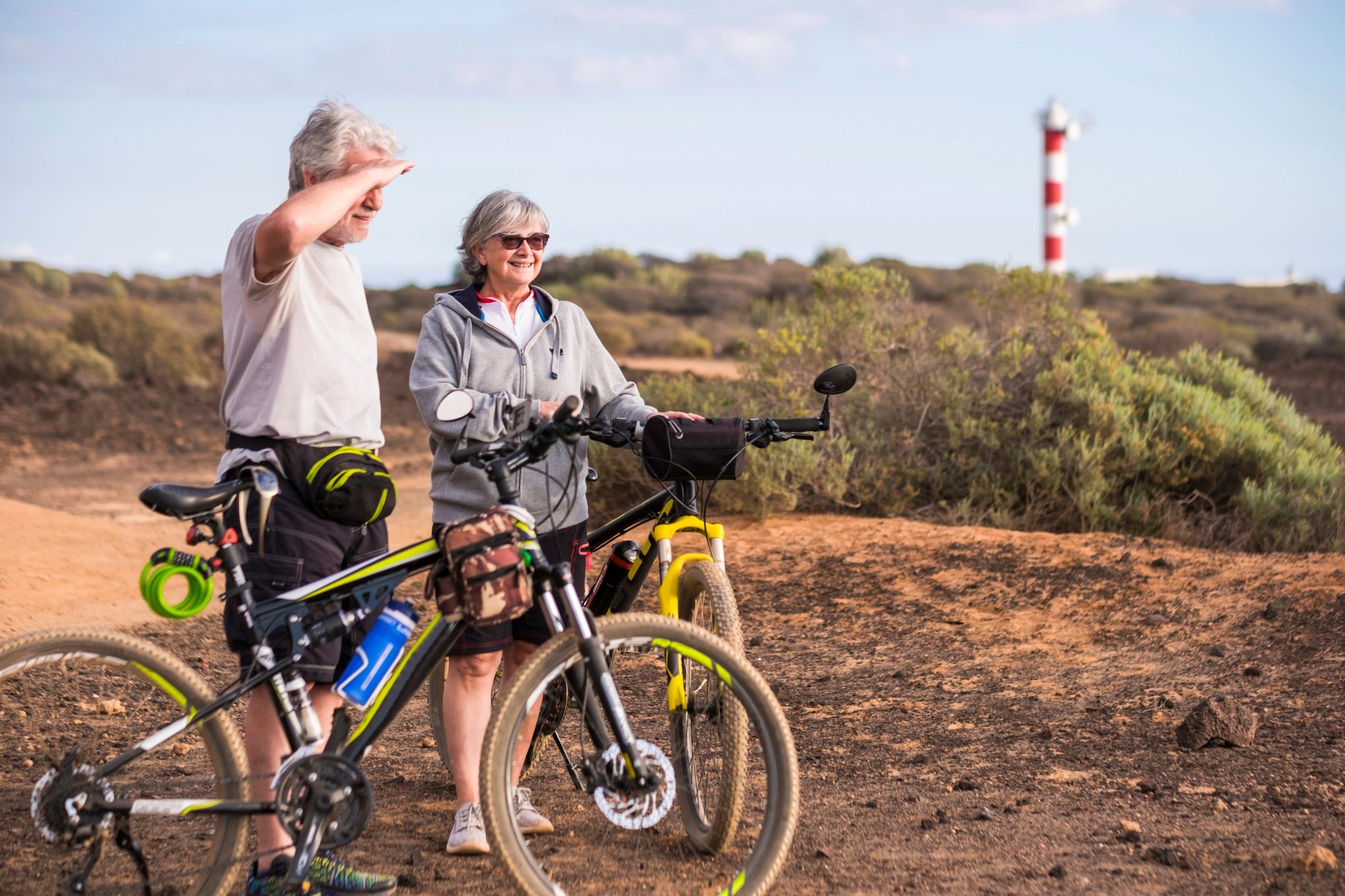
Midday: Explore at Your Own Pace
The beauty of a bike holiday in Denmark is flexibility — you decide when to pause, take photos, or explore. Unlike group tours, there’s no fixed timetable.
Our digital guidebook and GPX tracks point out:
Scenic viewpoints: coastlines, cliffs, and rolling farmland
Cultural highlights: castles, Viking sites, viewpoints, and charming villages
Recommended cafés & restaurants: perfect for a smørrebrød lunch or a coffee stop
Water refill stations
Resupply points: pharmacies and grocery stores
Take your time! If a beach, a harbor town, or a quiet forest trail tempts you to linger, enjoy it. That’s the freedom of self-guided cycling in Denmark.
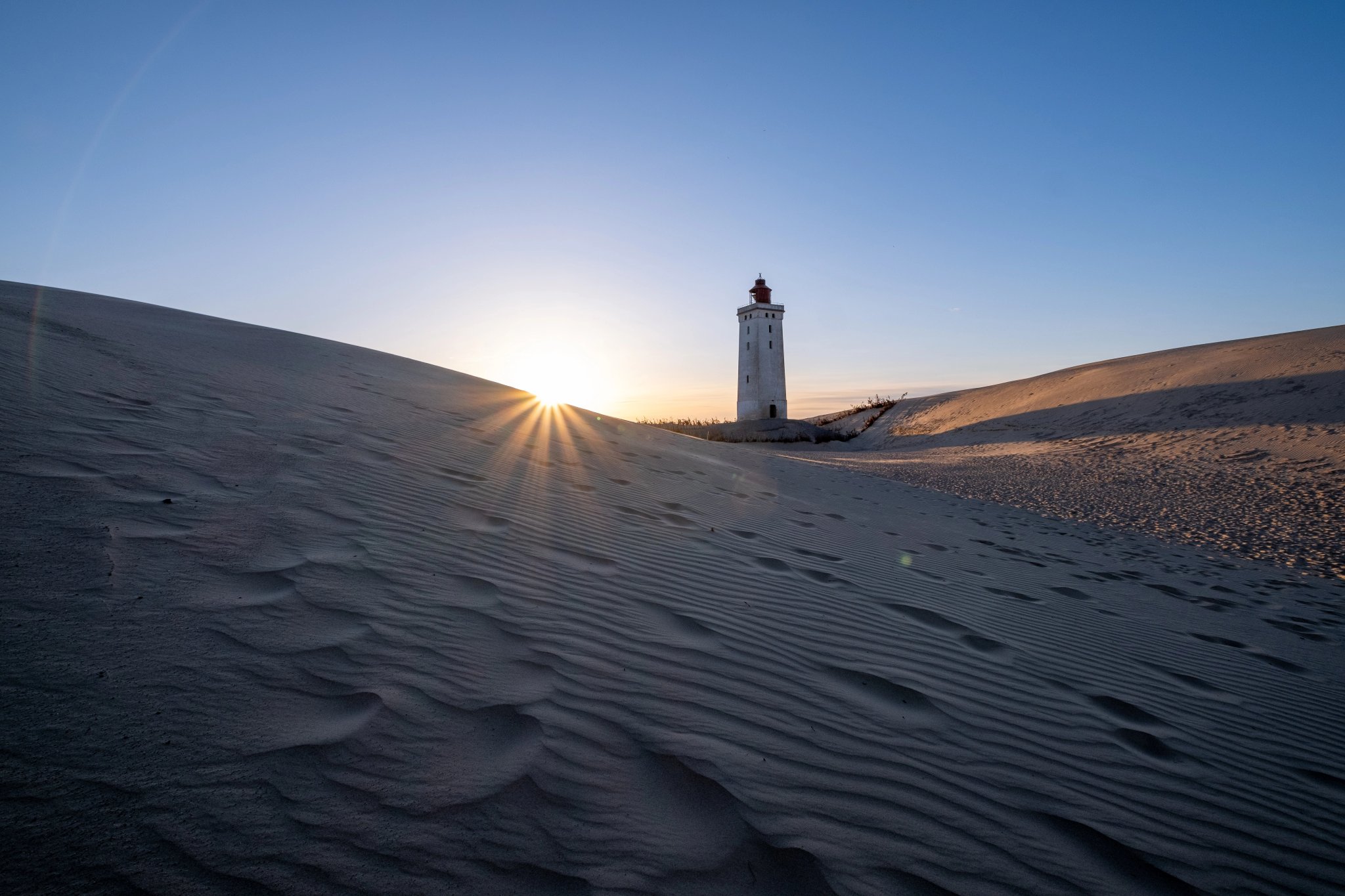
Late Afternoon: Arrive & Relax
By late afternoon, you’ll arrive at your next accommodation, already booked and prepared for you. Your luggage will be waiting when you check in, leaving you free to shower, unwind, and explore.
Spend the evening however you like — a stroll through a historic town, a visit to a castle, or simply relaxing over dinner. With all logistics handled, your only job is to enjoy every moment of your cycle Denmark journey.
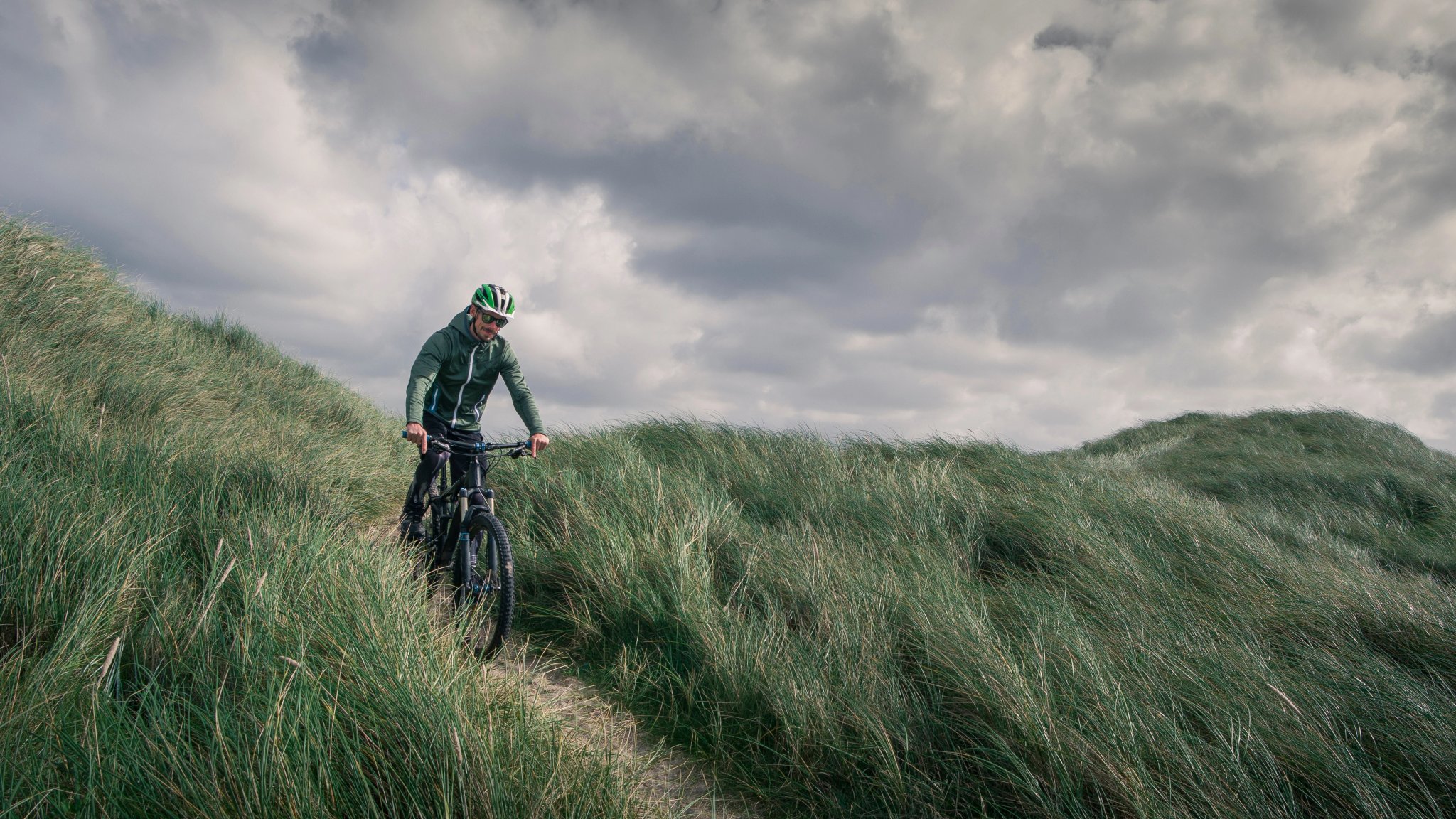
Accommodation Types
Cyclists in Denmark can look forward to comfortable, locally run bike-friendly accommodations chosen for their charm and convenience. Expect a mix of:
Hotels – centrally located, often with easy bike storage and hearty breakfasts.
Inns & B&Bs – cozy, family-run places that give you a taste of Danish hospitality.
Boutique stays – in historic towns or near landmarks, offering character and comfort.
All options are vetted for cyclists’ needs, so you’ll always have secure storage, good facilities, e-bike charging (if needed), and a welcoming place to relax after a day in the saddle.
Food and Rest Stops
Denmark is full of bike-friendly cafés, bakeries, and small restaurants, making it easy to pause along your route. Our digital guidebook highlights recommended stops — from the best smørrebrød lunch spots to seaside smokehouses — but you’ll also find plenty on your own.
Look out for:
Bakeries (bageri) – perfect for coffee and Danish pastries.
Local inns and kro – traditional places serving hearty meals.
Harbors & picnic areas – ideal for a break with a sea view.
Resupply at supermarkets like Netto, Rema 1000, and Coop, which are widely available in towns and villages
Tap water is safe to drink everywhere, so bring a reusable bottle to refill at cafés, public fountains, or your accommodation.

Choose Your Bike
On all of our bike tours in Denmark, you can select the bicycle that best matches your riding style and comfort preferences.
While certain models may be recommended depending on the terrain of your chosen tour, the final decision is always yours:

Cube Road Bike
*Please note that this is our standard model. If unavailable, a similar bike will be provided.
Type: Road Bike
Best for: Paved road tours, long-distance rides, and performance cycling
This lightweight aluminium road bike is designed for smooth performance on paved roads, offering precise shifting, efficient power transfer, and a geometry suited for endurance rides. A great choice for riders seeking speed, responsiveness, and comfort over longer distances.
.png&w=828&q=75)
Cube Touring Pro
*Please note that this is our standard model. If unavailable, a similar bike will be provided.
Type: Trekking Bike
Best for: City rides, multi-day tours, and everyday cycling
This bike is built for both urban exploring and long-distance touring. It features a 2x9 drivetrain, a suspension fork, and powerful hydraulic disc brakes. Equipped with puncture-resistant tires, built-in lights, mudguards, rear rack, and a kickstand, this bike is fully outfitted for daily use or extended cycling adventures.

Marin Gestalt
*Please note that this is our standard model. If unavailable, a similar bike will be provided.
Type: Gravel Bike
Best for: Gravel touring, bikepacking, and mixed-surface adventures
A versatile gravel bike built for comfort and control on varied terrain. It features a lightweight aluminium frame, carbon fork, and hydraulic disc brakes. With clearance for wide tires and a rear rack included, it's well-suited for long-distance rides, light touring, or everyday adventure.

Green’s E-Bike
*Please note that this is our standard model. If unavailable, a similar bike will be provided.
Type: Electric Touring Bike
Best for: Longer rides, hillier routes, and comfortable touring
The Green’s touring e-bike features a powerful battery paired with a reliable mid-drive motor, providing smooth and natural-feeling pedal assistance. It’s an excellent choice for riders who want to cover more ground with less effort.
No matter which option you choose, all bikes are professionally serviced and ready for touring.
A basic repair kit is provided with your rental, and bike repair shops are marked along your route in the digital guidebook, so you can ride with complete confidence knowing support is always close at hand.

Cycle Trough Denmark With Confidence
Every day on two wheels brings new discoveries — from Viking history and royal castles to wide coastlines and charming villages. With everything arranged for you, all you need to do is enjoy the ride and take in the scenery at your own pace.
Want to know why Denmark is such a cycling paradise? Discover why cycling in Denmark is special.
Ready to start planning? Contact us and we’ll help design your perfect Denmark bike adventure.

Hassle-Free
We handle itineraries, accommodations, and anything else you prefer not to deal with, so you can enjoy a carefree holiday.

Completely Customizable
Flexibility is our middle name — whether you want more or less, or just beyond ordinary, we’ll make it happen.

Book with confidence
We are a financially protected company, fully bonded and insured, keeping your money safe and allowing you to travel with confidence.

Unbeatable support
Our 24/7 customer support is where we show our passion, bringing you a better experience by making your well-being our number one priority.




.jpg&w=3840&q=75)
